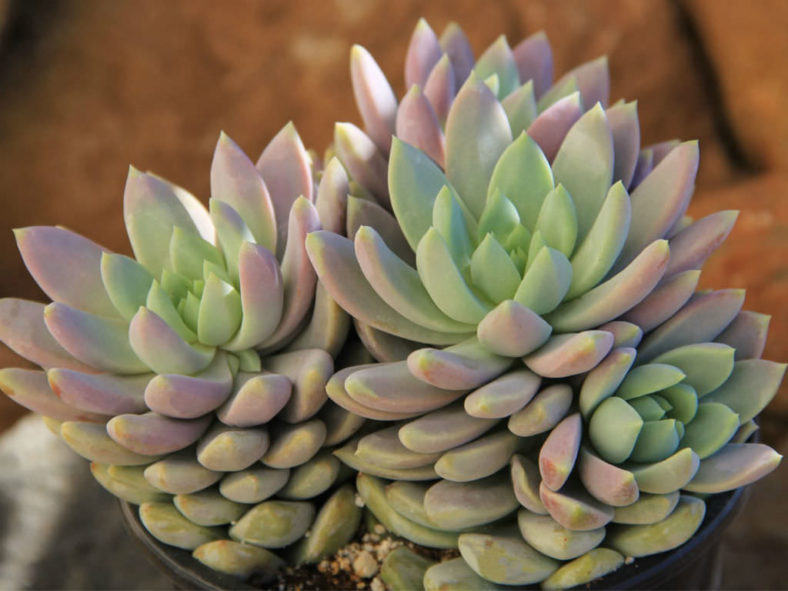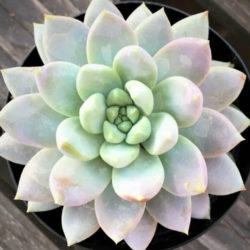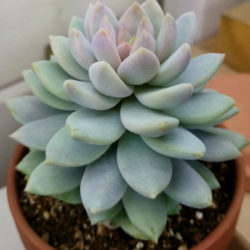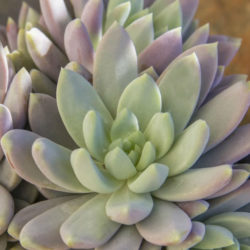Scientific Name
×Sedeveria 'Lilac Mist'
Scientific Classification
Family: Crassulaceae
Subfamily: Sempervivoideae
Tribe: Sedeae
Nothogenus: ×Sedeveria
Description
×Sedeveria 'Lilac Mist' is a charming succulent that forms dense rosettes of grey-green leaves with distinctive pink to violet blush, particularly in intense sunlight. The rosettes can grow up to 4.4 inches (11 cm) in diameter, freely offsetting to form a compact clump. The chunky leaves are obovate, measure up to 2 inches (5 cm) long and 0.6 inches (1.5 cm) wide, and are not so easily detachable compared to many of its Sedum "cousins."
The bell-shaped flowers are reddish and appear on leafy stalks from winter to spring.
Origin
×Sedeveria 'Lilac Mist' is a patented hybrid (PP29643) created by Renee O'Connell in 2012. It is the product of a planned breeding program by Altman Plants in Vista, California, United States.

Hardiness
USDA hardiness zone 9a to 11b: from 20 °F (−6.7 °C) to 45 °F (+7.2 °C).
How to Grow and Care
When growing Sedum, keep in mind that Sedum plants need very little attention or care. They will thrive in conditions many other plants thrive in but do just as well in less hospitable areas. They are ideal for that part of your yard that gets too much sun or too little water to grow anything else. A common name for Sedum is Stonecrop because many gardeners joke that only stones need less care and live longer.
Sedum is easily planted. For shorter varieties, laying the plant on the ground where you want it to grow is usually enough to get the Sedum plant started there. They will send out roots from wherever the stem touches the ground and root itself. If you want to ensure that the plant will start there, add a very thin covering of soil.
You can break off one of the stems for taller Sedum varieties and push it into the ground where you want to grow it. The stem will root very easily, and a new plant will be established in a season or two.
See more at How to Grow and Care for Sedum
Links
- Back to nothogenus ×Sedeveria
- Succupedia: Browse succulents by Scientific Name, Common Name, Genus, Family, USDA Hardiness Zone, Origin, or cacti by Genus
Photo Gallery
Click on a photo to see a larger version.


